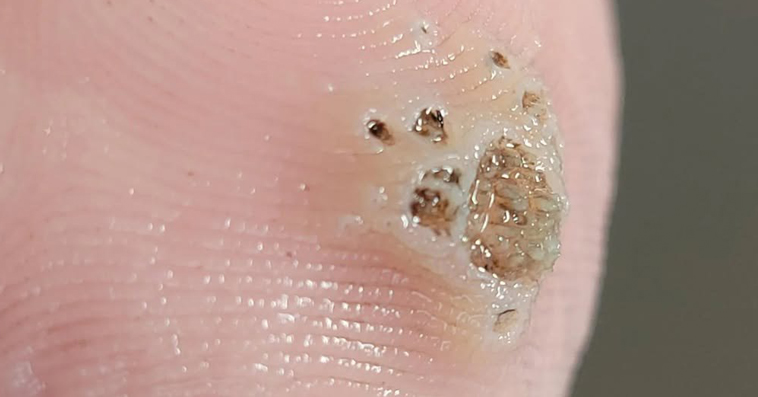Safe and Natural Home Remedies to Help with Wart Removal
Warts are small, often harmless skin growths caused by certain strains of the human papillomavirus (HPV). While generally non-threatening, they can be frustrating or embarrassing, especially if they appear in noticeable areas. Many individuals seek natural ways to manage and reduce the appearance of warts, often turning to home remedies passed down through generations.
If you’re exploring gentle, at-home methods to support skin care and potentially help diminish the appearance of warts, the following natural remedies might be worth considering. Keep in mind that results can vary based on the individual, the type of wart, and consistency of use. While some people report positive experiences, these methods are not guaranteed to work for everyone, and they do not replace medical advice or treatment.
1. Apple Cider Vinegar (ACV)
Why People Use It:
Apple cider vinegar contains acetic acid, which may help exfoliate dead skin cells over time. Some believe it can assist in breaking down the layers of skin affected by the wart.
How to Use It:
Soak a small cotton ball in apple cider vinegar.
Apply it directly to the wart.
Cover it with a clean bandage or medical tape.
Leave it on overnight and remove it in the morning.
Wash the area with mild soap and water.
Repeat daily.
Important Note:
Apple cider vinegar may cause irritation or a burning sensation. If this occurs, dilute the vinegar with water before applying or reduce application frequency.
2. Garlic
Why People Use It:
Garlic is well-known for its natural antimicrobial and antiviral properties. It has been traditionally used in skincare for centuries.
How to Use It:
Crush a fresh garlic clove until it forms a paste.
Apply a small amount directly to the wart.
Cover the area with a bandage.
Let it sit for 1–2 hours, then gently rinse off.
Repeat daily for up to two weeks.
Caution:
Garlic is potent and may cause skin irritation in sensitive individuals. Start with short application times and observe how your skin reacts.
3. Banana Peel
Why People Use It:
The inner side of a banana peel contains natural enzymes and antioxidants. Some individuals believe these components can assist with softening and breaking down wart tissue over time.
How to Use It:
Cut a small piece of banana peel.
Rub the inner side gently on the wart.
Secure it over the wart with a bandage before bed.
Leave it on overnight and remove in the morning.
Repeat nightly for several weeks.
4. Tea Tree Oil
Why People Use It:
Tea tree oil is frequently used in natural skincare for its powerful antimicrobial and antiseptic properties. It’s also used for various skin blemishes and minor issues.
How to Use It:
Place 1–2 drops of pure tea tree oil on the wart.
Cover with a sterile bandage.
Repeat twice daily.
Dilution Tip:
If you have sensitive skin, mix tea tree oil with a carrier oil like coconut or olive oil before application to reduce the risk of irritation.

5. Aloe Vera Gel
Why People Use It:
Aloe vera is widely known for its soothing and hydrating qualities. It may help support skin healing and reduce inflammation around the wart area.
How to Use It:
Use fresh aloe vera gel from the plant or purchase 100% pure aloe vera.
Apply it directly to the wart.
Let it absorb or cover it with a breathable bandage.
Reapply several times a day for best results.
6. Duct Tape Method (Duct Tape Occlusion Therapy)
Why People Use It:
This unconventional method is surprisingly popular. Some suggest that covering the wart might “suffocate” it, prompting the immune system to react.
How to Use It:
Place a small piece of duct tape over the wart.
Leave it on for 5–7 days without removing.
After removal, soak the wart in warm water.
Gently file it with a pumice stone or emery board.
Leave the area uncovered overnight and reapply duct tape the next day.
Repeat this process until improvement is seen.
Additional Tips for Managing Warts at Home
Consistency is Crucial: Natural methods generally require repeated application over several weeks. Be patient and persistent.
Hygiene Matters: Wash hands before and after touching a wart to avoid spreading the virus to other parts of the body or other people.
Avoid Picking: Picking or scratching warts can worsen the condition or spread the virus.
Monitor for Changes: If a wart changes in size, color, or becomes painful, it’s important to consult a medical professional.
Protect Sensitive Areas: Be cautious with home remedies on areas like the face, genitals, or open wounds. These areas are more prone to irritation and require special care.
When to See a Healthcare Professional
While home remedies can be a helpful part of personal care, they may not be effective for every individual or every type of wart. It’s always wise to seek medical guidance in the following situations:
The wart is painful, bleeding, or shows signs of infection.
It appears on the face, genitals, or other sensitive areas.
There’s no improvement after several weeks of home care.
You’re unsure whether the skin growth is actually a wart.
Final Thoughts
Using natural remedies to care for warts is a common practice, especially for those looking to avoid harsh chemicals or clinical procedures. While results may vary and scientific evidence is limited for some methods, many people choose these options for their simplicity and accessibility.
If you decide to try these remedies, always proceed with caution, observe how your skin reacts, and consult a healthcare provider if you have concerns or experience discomfort. Prioritizing safety and informed choices is essential for any type of skin care approach.


